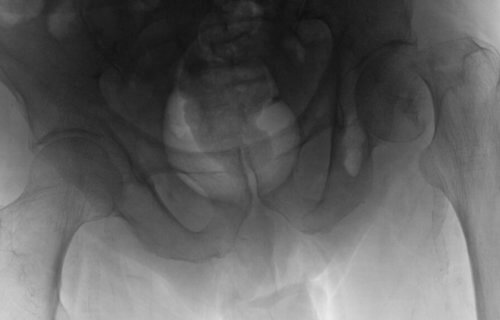BATH, United Kingdom — Machine may have finally surpassed man — at least when it comes to identifying and classifying hip fractures. Scientists from the University of Bath report a new machine learning process is outperforming human physicians when it comes to finding serious hip injuries.
More specifically, two convolutional neural networks (CNNs) developed by study authors successfully identified and classified hip fractures via X-rays with an astounding 19 percent greater degree of accuracy and confidence than human doctors.
In collaboration with the Royal United Hospitals Trust Bath, North Bristol NHS Trust, and Bristol Medical School, researchers from the University of Bath’s Centre for Therapeutic Innovation and Institute for Mathematical Innovation started this project in hopes of developing a faster, easier, and more efficient means of classifying hip fractures. After all, the faster health care professionals discover a fracture, the better the odds patients will have a positive outcome.
To that end, the team used 3,659 hip X-rays to “train and test” the machine learning neural networks — a form of artificial intelligence. Importantly, at least two human experts classified each one of those scans before using them to teach the neural networks.
Ultimately, the machine learning program yielded a remarkable 92 percent overall accuracy rate, which was 19 percent better than accuracy scores among human physicians.
Early diagnosis is the key to survival
Hip fractures are a common cause of both morbidity and mortality among older adults. If doctors find a fracture before surgery is necessary, the road to recovery will be much easier for that patient. Study authors note that even delaying surgery by just 48 hours leads to an increased risk of adverse outcomes and death.
“Machine learning methods and neural networks offer a new and powerful approach to automate diagnostics and outcome prediction, so this new technique we’ve shared has great potential. Despite fracture classification so strongly determining surgical treatment and hence patient outcomes, there is currently no standardized process as to who determines this classification in the UK – whether this is done by orthopedic surgeons or radiologists specializing in musculoskeletal disorders,” says lead study author Prof. Richie Gill, Co-Director of the Center for Therapeutic Innovation, in a university release.
“The process we’ve developed could help standardize that process, achieve greater accuracy, speed up diagnosis and alleviate the bottleneck of 300,000 radiographs that remain unreported in the UK for over 30 days.”
A fracture falls into one of three classes, depending on the area of the joint where the injury occurs: intracapsular, trochanteric, or subtrochanteric. Doctors prescribe treatments based on the specific “fracture class,” but some treatments cost far more than others. So, proper fracture classification is important from a financial perspective as well.
Hip fractures cost Americans billions
In 2019 alone, the U.K. National Hip Fracture Database reported 67,671 hip fractures. Moreover, considering how life expectancies continue to increase throughout most of the world, study authors project future years and decades will only see more hip fractures on a global scale. Across the planet, estimates show that 1.6 million hip fractures occur each year. According to the study, such diagnoses account for a $6 billion per year economic burden in the U.S.
“As trauma clinicians, we constantly strive to deliver excellence of care to our patients and the healthcare community underpinned by accurate diagnosis and cost-effective medicine,” explains study co-author Mr. Otto Von Arx, Consultant Orthopedic Spinal Surgeon at Royal United Hospitals Bath NHS Trust. “This excellent study has provided us with an additional tool to refine our diagnostic armamentarium to provide the best care for our patients. This study demonstrates the excellent value of collaboration by the RUH and the research leader, the University of Bath.”
The study is published in the journal Scientific Reports.
